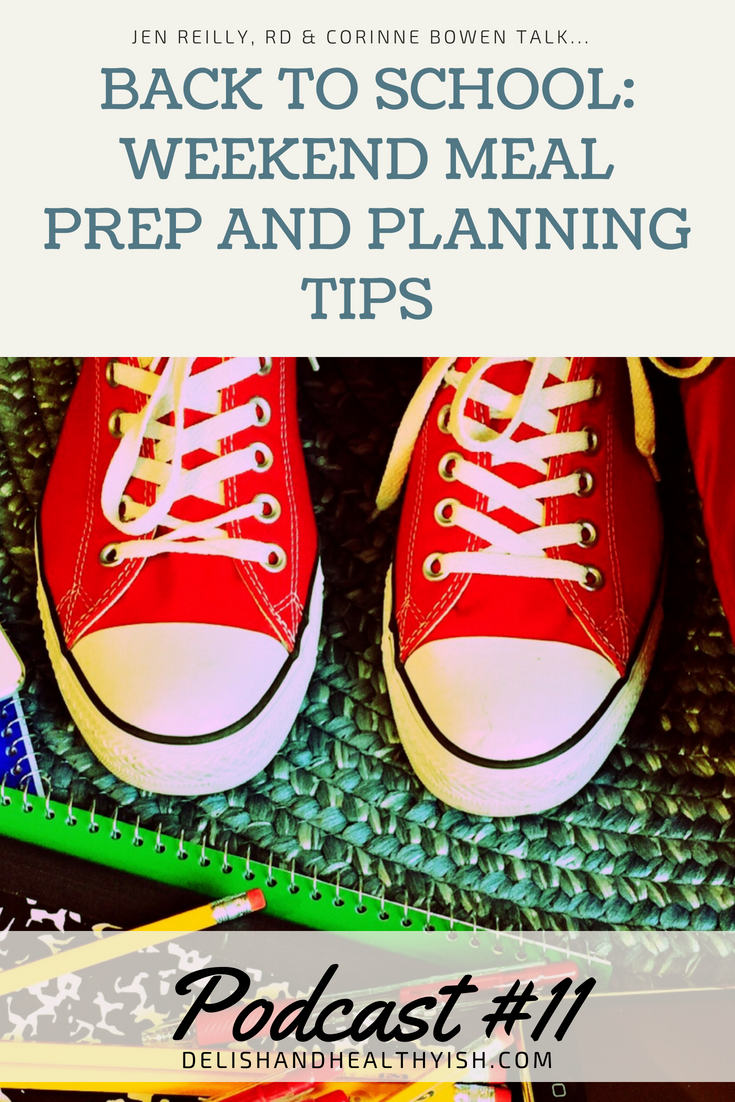
Happy New Year from the Delish and Healthy-ish team!
Jen here. Corinne and I kick off Season 2 of the podcast with episode 24 discussing realistic ways to set New Year’s Resolutions. Here they are summarized:
- Celebrate what you’ve done well last year and keep those habits going strong. For Corinne, she’s celebrating her triumph over sweets and I am celebrating making my kids’ lunches at night (consistently since September) rather than making them in the middle of the morning chaos. What have you conquered in 2018 that you can keep up in the new year?
- Pick out just a few things you want to work on each month or each quarter, and be REAL. Take your yearly to-do list and prioritize the items. If those things don’t make you happier or healthier, kick them off your list! Aim for a TOTAL of 4-6 things this year. I have been putting off scheduling a dermatology appointment and a neglected check-in with my GYN, and I’m going to get those done by March. Can I do it? See number 4 below…
- Be consistent and show perseverance about your new challenges and habits. Maybe you want to take control of your finances, get your meal planning groove on, try healthier eating (um, have you SEEN our incredible 5-Day Detox full of Reilly and Bowen Family Favorites?!?!), or start jogging every day. Really DO those things, and if you can’t go all the way, go part way. Don’t lose interest easily, don’t give up, and you’ll make those things habits for years to come. I’m working on exercising 30 minutes daily no matter what this month. I’m taking 1 month at a time, but so far so good! Corinne is doing daily yoga despite her busy house, and is motivated by how amazing she feels.
- Find someone who can help you stay motivated. The buddy system will help you stay motivated and on track. Just this morning, Corinne challenged me to make my dermatology appointment if she made her’s…. and it worked! Boom. Bring on the freckle exam!
New Year’s Resolutions can be an amazing way to make your life better. Use them as an excuse to try new things and finally cross some chores and headaches off your to-do list. You got this!
xo,
Jen (& Corinne)









